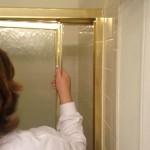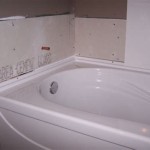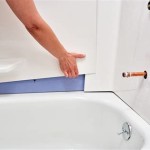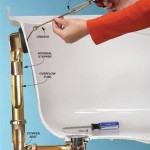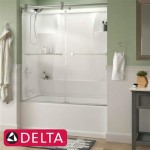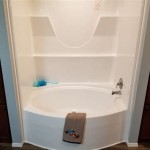Fiberglass Bathtub Refinishing Kit Reviews: A Comprehensive Guide
Fiberglass bathtubs, while often more affordable and lightweight than their cast iron or steel counterparts, are susceptible to wear and tear over time. Scratches, stains, and dullness can detract from the overall aesthetics of a bathroom. Rather than replacing the entire bathtub, a popular and cost-effective alternative is to utilize a fiberglass bathtub refinishing kit. These kits typically contain materials designed to clean, repair, and recoat the surface of the bathtub, restoring its original shine and extending its lifespan. This article provides a comprehensive overview of fiberglass bathtub refinishing kits, examining their components, application processes, and critical factors to consider when selecting the appropriate product.
Understanding the Components of a Fiberglass Bathtub Refinishing Kit
A typical fiberglass bathtub refinishing kit will include a variety of components, each serving a specific purpose in the refinishing process. The most common components include a cleaning solution, an etching agent, a bonding agent (primer), and a topcoat (epoxy or urethane). Some kits may also include materials for repairing minor chips or cracks, such as fillers or patching compounds. The quality and formulation of these components are crucial to the success and longevity of the refinishing project. Understanding the function of each component is essential for proper application and optimal results.
The cleaning solution is typically a strong degreaser designed to remove soap scum, mineral deposits, and other surface contaminants. Thorough cleaning is paramount to ensuring proper adhesion of subsequent layers. An etching agent, often containing an acid solution, is used to create a slightly roughened surface on the fiberglass. This process, known as etching, provides a better mechanical bond for the primer. Without proper etching, the new coating may peel or chip prematurely.
The bonding agent, or primer, acts as an intermediary layer between the etched fiberglass surface and the topcoat. It promotes adhesion between the two, ensuring a durable and long-lasting finish. Primers are formulated to penetrate the porous surface of the etched fiberglass, creating a strong bond at the molecular level. The type of primer included in a kit often dictates the compatibility with the topcoat.
The topcoat is the final layer applied to the bathtub and provides the protective and aesthetic finish. Topcoats are commonly made from either epoxy or urethane resins. Epoxy coatings are known for their hardness and resistance to chemicals, while urethane coatings offer greater flexibility and UV resistance. The choice between epoxy and urethane depends on the desired properties and the expected use of the bathtub. Some kits offer two-part epoxy systems, requiring mixing of a resin and a hardener. Proper mixing ratios are critical for achieving the desired cure and performance characteristics.
Kits may also contain tools such as sandpaper, application brushes or rollers, mixing sticks, and protective gloves. The inclusion of these tools can simplify the refinishing process, although the quality of these tools may vary between kits. Examining the included components and their intended purpose is a crucial step in selecting a suitable refinishing kit.
Evaluating Key Performance Characteristics in Refinishing Kits
When evaluating fiberglass bathtub refinishing kits, several key performance characteristics should be considered. These include adhesion, durability, chemical resistance, gloss retention, and ease of application. The relative importance of these characteristics will depend on the specific needs and expectations of the user.
Adhesion refers to the ability of the new coating to bond permanently to the underlying fiberglass surface. Poor adhesion can lead to peeling, chipping, and blistering, resulting in a premature failure of the refinishing project. Factors affecting adhesion include the quality of the cleaning and etching processes, the compatibility of the primer and topcoat, and the thoroughness of the surface preparation. Independent testing or user reviews can provide insights into the adhesion performance of different kits.
Durability refers to the resistance of the refinished surface to scratches, abrasions, and impacts. A durable coating will withstand the rigors of daily use and maintain its appearance over time. Epoxy coatings are generally more durable than urethane coatings in terms of scratch resistance, but urethane coatings may offer better impact resistance due to their greater flexibility. The thickness of the applied coating also contributes to its durability. Multiple thin coats are typically preferred over a single thick coat to minimize the risk of runs and sags and to promote even curing.
Chemical resistance refers to the ability of the coating to withstand exposure to common household chemicals, such as soaps, shampoos, cleaning agents, and bath oils. Exposure to these chemicals can cause discoloration, softening, or even degradation of the coating. Epoxy coatings generally offer superior chemical resistance compared to urethane coatings. The specific formulation of the coating will also play a role in its chemical resistance properties. User reviews often mention the performance of the coating after exposure to various chemicals, providing valuable real-world feedback.
Gloss retention refers to the ability of the coating to maintain its original shine and luster over time. Exposure to UV light can cause fading and dulling of the coating, particularly in urethane-based systems. UV inhibitors can be added to the coating to improve its gloss retention. Epoxy coatings typically exhibit excellent gloss retention in indoor environments. The quality of the topcoat and the presence of UV inhibitors are important factors to consider when evaluating gloss retention.
Ease of application refers to the user-friendliness of the refinishing process. Factors affecting ease of application include the viscosity of the coating, the drying time, and the difficulty of mixing and applying the materials. Some kits may require specialized equipment, such as spray guns, while others can be applied with brushes or rollers. The instructions provided with the kit should be clear and concise, and the materials should be relatively forgiving to minor application errors. Kits designed for brush or roller application are generally considered easier to use for novice refinishers.
Analyzing User Reviews and Expert Opinions
Before selecting a fiberglass bathtub refinishing kit, it is prudent to analyze user reviews and expert opinions to gain a comprehensive understanding of the product's performance and suitability. User reviews can provide valuable insights into the real-world experience of using the kit, highlighting both its strengths and weaknesses. Expert opinions, often found in professional refinishing forums or articles, can offer a more technical perspective on the kit's formulation, application process, and long-term durability.
When analyzing user reviews, it is important to consider the source of the reviews and the potential for bias. Reviews from verified purchasers are generally more reliable than anonymous reviews. Look for reviews that provide specific details about the application process, the results achieved, and any problems encountered. Pay attention to recurring themes or comments, as these may indicate common issues with the kit. Be wary of reviews that are overly positive or negative, as these may be biased or unreliable.
Expert opinions can provide a more objective assessment of the kit's performance. Look for reviews from professional refinishers or independent testing laboratories. These reviews often include detailed analysis of the kit's formulation, its adhesion and durability characteristics, and its resistance to chemicals and UV light. Expert opinions can also provide guidance on the proper application techniques and troubleshooting common problems.
Comparing reviews across multiple sources can help to provide a balanced and informed perspective on the kit's overall performance. Look for consensus among reviewers, both users and experts, regarding the kit's strengths and weaknesses. Consider the specific needs and expectations of the user when evaluating the reviews. A kit that is highly rated for ease of application may not be the best choice for a user who is looking for maximum durability and chemical resistance. Ultimately, the selection of a fiberglass bathtub refinishing kit should be based on a careful consideration of its performance characteristics, user reviews, and expert opinions.
In addition to online reviews, consulting with local hardware stores or paint supply stores can provide valuable insights. Employees at these establishments often have experience with a variety of refinishing products and can offer recommendations based on local conditions and customer feedback. They can also provide guidance on the proper application techniques and safety precautions.

Rust Oleum Tub And Tile Refinishing Kit Review Ask Anna

To Spray Or Not A Bathtub That Is The Caldwell Project

To Spray Or Not A Bathtub That Is The Caldwell Project

How To Paint A Tub With Rustoleum What Not Do

Should You Paint Your Bathtub 1 Year Review

Bathtub Refinishing Kit Guide Diy Bathroom Update

Update Rustoleum Tub And Tile Refinishing Kit Review Painted One Year Later Refinished

My Painted Bathtub 5 Years Later An Honest Review Of Refinished Jacuzzi Tub

To Spray Or Not A Bathtub That Is The Caldwell Project

4 Ways To Refinish Your Bathtub Which Is Best

